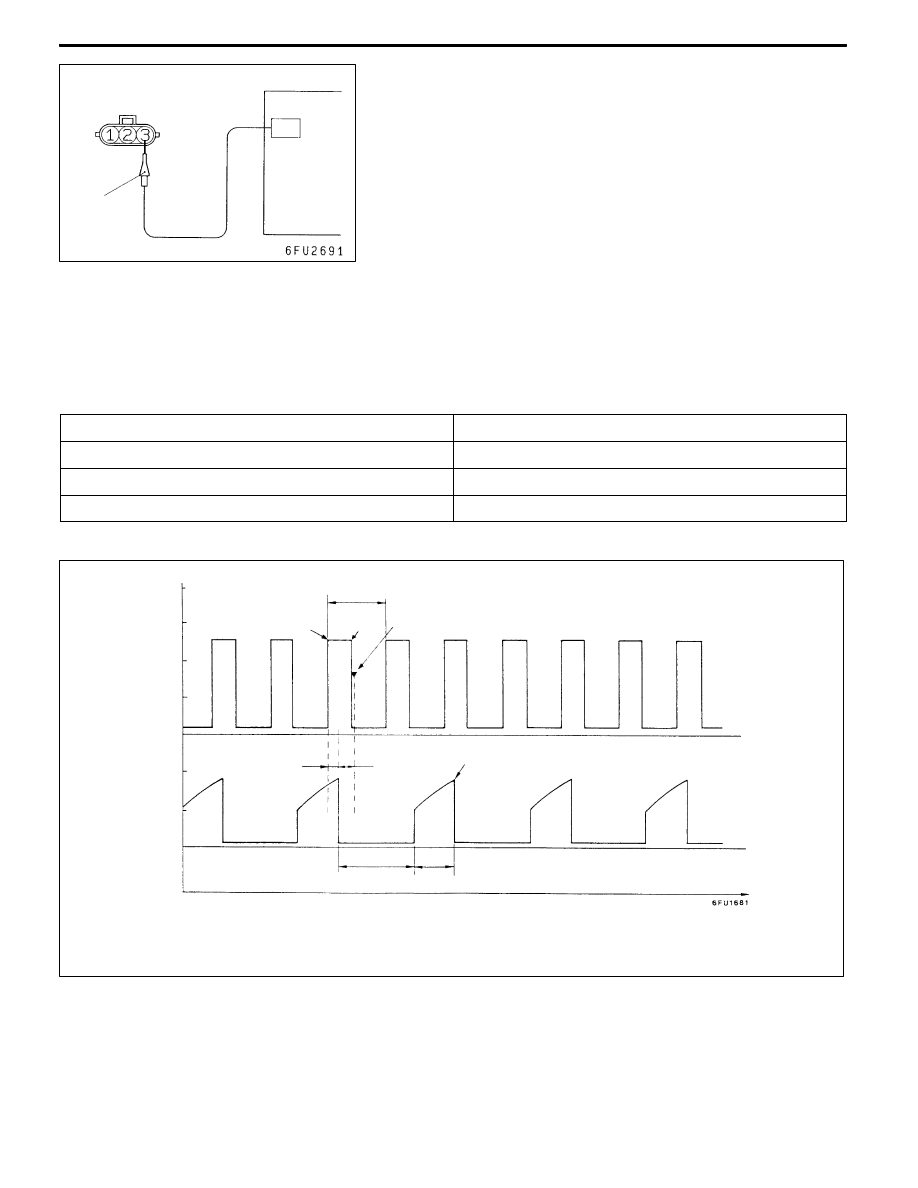Mitsubishi Lancer Evolution 7. Manual - part 206

MPI -
Troubleshooting
13A-123
IGNITION COIL AND POWER TRANSISTOR
D
Ignition coil primary signal
Refer to GROUP 16 - Ignition system.
D
Power transistor control signal
Measurement Method
1. Disconnect the ignition coil connector, and connect the
special tool (test harness: MB991658) in between. (All
terminals should be connected.)
2. Connect the analyzer special patterns pickup to terminal
No. 3 of each ignition coil connector in turn.
Alternate Method (Test harness not available)
1. Connect the analyzer special patterns pickup to
engine-ECU terminal No. 10 (No. 1 - No. 4), terminal
No. 23 (No. 2 - No. 3) respectively.
Standard Wave Pattern
Observation condition
Function
Special patterns
Pattern height
Low
Pattern selector
Display
Engine r/min
Approximately 1,200 r/min
Standard wave pattern
Crank angle
sensor output
wave pattern
Power transistor
control signal
wave pattern
(V)
75_BTDC
5_BTDC
T: Revolution time corresponding to a crank angle of 180_
Compression top dead center
θ: Spark
advance
angle
Ignition period
OFF
ON
Dwell section
T1: Time computed by the engine-ECU
Time
θ
T1
T
6
4
2
0
4
2
0
Special
patterns
pickup
Analyzer